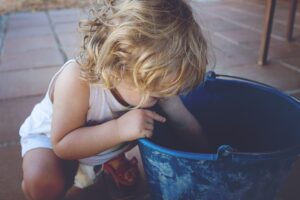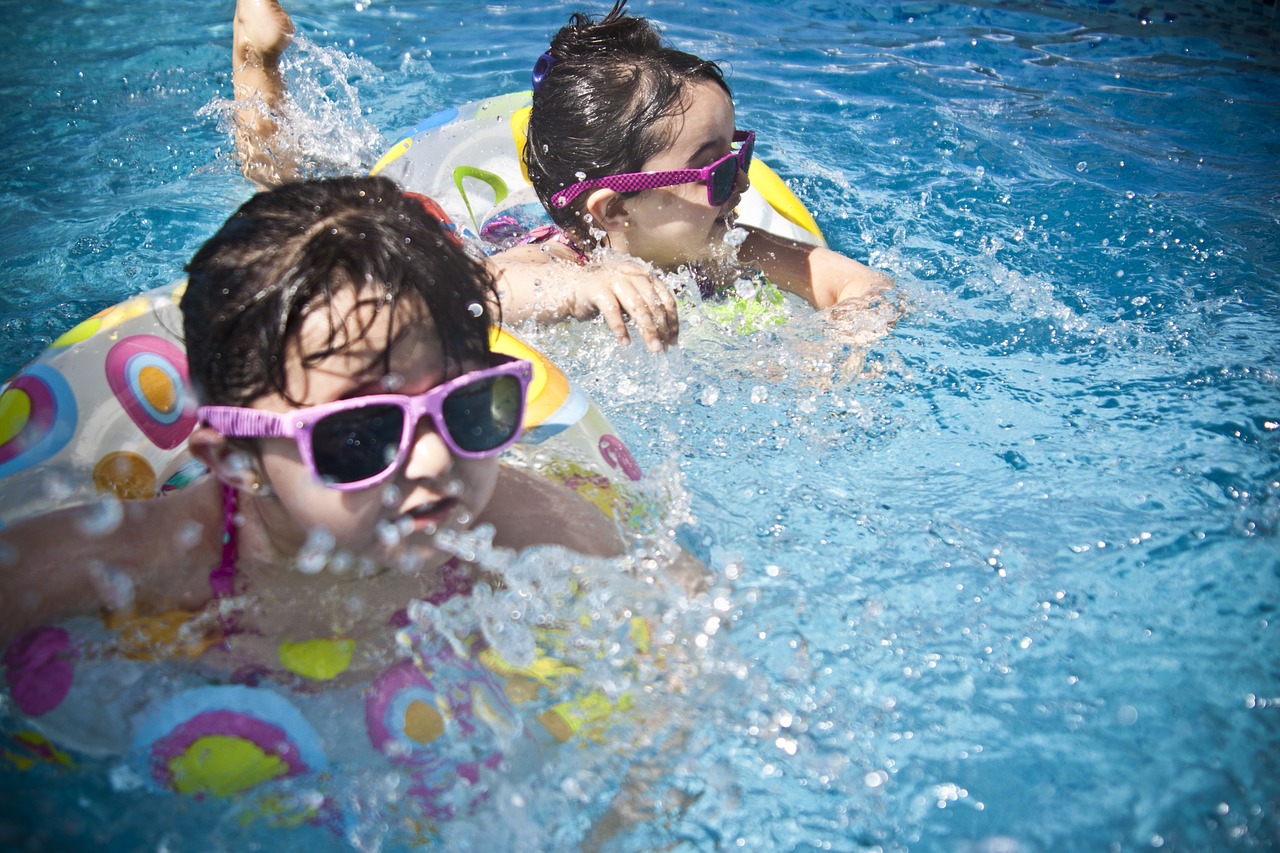It’s the saddest news we hear in the Valley every year: a toddler or child drowning. It’s already happened this year: a 3-year old drowned in the family pool in Queen Creek in April.
It’s not that parents aren’t alert. Many do all they can. But just losing sight for a moment, through distraction or a blocked view, is long enough for a child to begin drowning.
So what can you do to prevent accidental drownings?
Child Drowning Can Happen in Any Body of Water

Children don’t just drown in pools. Any body of water can potentially drown a small child.
According to the Centers for Disease Control and Prevention, drowning is the second-leading cause of death among children ages one to four, after death caused by birth defects. While most of these accidents happen in pools, the number of drownings outside pools rises with age, CDC says.
Overall, drowning is the second-leading cause of death for children ages one to 14, after motor vehicle crashes.
Here is Arizona, children, teens, and adults drown in canals, lakes, rivers, and reservoirs. (A teenager drowned in Lake Pleasant in March.) But young children have drowned in bathtubs and buckets, in plastic and blow-up pools, and in sinks and toilets.
Watch your child when he’s in the tub and on the toilet. Don’t let him or her use the bathroom or kitchen sink unsupervised. Let the phone ring or text messages buzz: nothing is more important than the safety of your child or the child you’re watching.
If There’s Water, You Need a Barrier to Protect Younger Kids
When there’s water and kids, you need a barrier.
For pools, this means a safety fence required in all Arizona homes with one or more children under age 6. Here’s a link to these requirements. Grandparents would be well-advised to install one in their yards.
What about other bodies of water? You can only put up barriers in places you control. So outside your home, you have to be the barrier or provide one.
Occupy the kids with non-water activities. This means making sure someone is really watching the kid(s). It’s impossible to do this if you’re also setting up food and other events. So plan ahead of time for at least one responsible adult (and that means one who’s abstaining from alcohol) or teenager to watch the little ones and engage in activities with them.
Bring balls, balloons, digging toys—whatever is appropriate to keep kids occupied outside of water—while you’re busy with other tasks.

Buy a life vest for your child. If swimming is part of your plans, get a kid-size life vest for your child. We often have them in our store; we also occasionally get life vests that are part of a swimming outfit.
There are a lot of opinions about floaties. Some kids are motivated by them to learn to swim, which is a necessary life skill. Just be careful that you don’t take them, or lifejackets for that matter, as a substitute for supervising children in water.
Finally, if you really want to enjoy the day and take time off from childcare, hire a sitter. Decide if the sitter and kids should come with you or stay home. There’s no shame in wanting time off to socialize. Raising kids is fun but tiring; all parents need time to relax and recharge.
Preventing Child Drowning Inside the Home
Young children can drown in just small amount of water. Toddlers are especially top-heavy and tend to fall head-first and struggle to get back up from that position.
Bathrooms are rife with potential water dangers. Here are some tips for making them little-kid-safe:
- Many of us have small steps or stools to help little ones reach the sink to wash their hands. Stay in the bathroom to supervise them during this step; you’re already in there if you’re potty-training. And it’s always good to ensure they know proper hand washing.
- Put the toilet seat down after each use. Many parents install toilet seat locks
to keep it down until it’s needed.
Apparently, toilet locks are difficult to match to brands. This article from Parent Guide recommends multipurpose latches used for cabinets or using two straps.
- Faucet safety locks
are available for the tub as well and can prevent accidental scalding from turning on hot water. It’s also a good idea to adjust the settings on your hot water heater to no higher than 120ºF.
- Use doorknob covers
to close off access to powder rooms, other bathrooms, and laundry rooms. These, too, can be problematic as some kids can still work them while adults struggle. Best Reviews looked at five door knob covers and provides pros and cons.
Outside your home, make sure your empty any buckets after it rains (yes, it will happen, even here!) or seal them with a cover. If you have a plastic pool, be sure to empty it after you’re done using it. (These steps are also essential to prevent mosquitoes from laying their eggs around your home.)
Above all, make sure someone is really watching the kids around water, or their access to it is blocked. Check out this list from Child Safety Zone to assess the drowning risks in your own personal situation. Knowledge and action can prevent an accidental drowning!


Leave a Reply